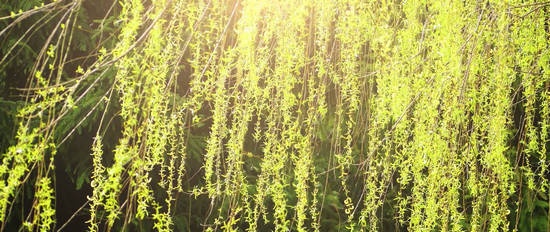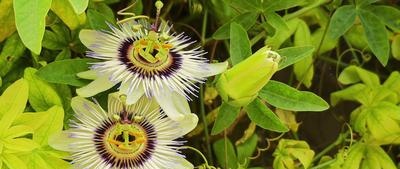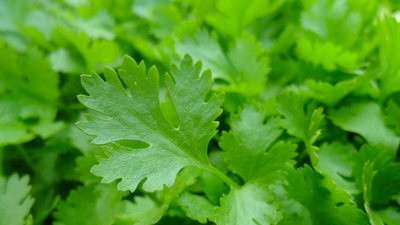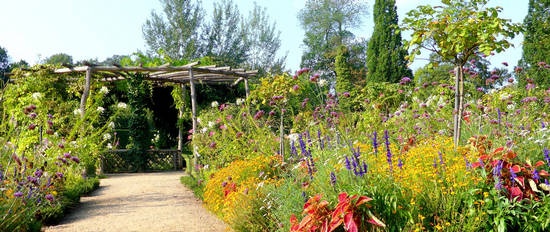Willow |
|
The willow tree is very wide. This was first noticed by the naturalist traveler Alexander Humboldt: “Like some animals (ducks, pigeons) miraculously multiplies nature in all belts, so willows, pines are settled by it on a very large space ". He also noticed that willows everywhere retain similarities in leaf shape and appearance, while other trees change so much with changing climatic conditions that it is not always possible for a specialist to determine what kind of tree it is. According to paleontology, willows appeared on Earth in distant geological eras. The remains of this tree were found in sediments of the Mesozoic era, that is, over a hundred million years ago. The simple and practical form of the leaf allows willows to grow both on the plains and high in the mountains, in the arctic and tropics. Which tree is able to withstand such temperature changes? But is it only the shape of the leaf that makes the willow so plastic with respect to the climate? Let's pay attention to the kidneys. Usually trees cover them so carefully that they overwinter, as in a warm mansion. And willow buds are "brought up" severely: they are covered with only one scale. And one more interesting feature: small shoots grow in all trees, and willows release long, sometimes two-meter shoots. Willow leaves fall later than all trees. The winter rest period is the shortest.
Its branches are extremely flexible. They do not break, but only bend. According to one expert, it seems as if you are dealing not with a tree shoot, but with an elastic twine. It is thanks to this elasticity that the willow is not afraid of either a strong wind or early snowfall. Wet snow, under the weight of which the fragile branches of elms break off like a giant's hand, slides off long narrow leaves and from smooth thin mobile branches. In addition, a powerful root system holds the trunk. The willow has a clear division into male and female trees. Both some and others have earrings. In female trees, the leaves are arranged clockwise, while in male trees, vice versa. Male earrings consist of scales strung on a short rod, under which there are stamens, crowned with anthers in the form of a golden horseshoe. Each earring is guarded by two stipules. Flowering takes place before leaves appear. A tree with such delicate earrings is beautiful. But it is not because of beauty that bees hover over him. Unlike all early flowering trees, there is a nectar vein at the base of the flower of both male and female trees. Bees collect nectar and, at the same time, enthusiastically wind yellow pollen around their paws, like threads on a spindle. Golden grains also cover the furry abdomen and back and are carried by bees - postmen to female trees.
But now the male earrings turn pale and crumble. And the tree has only one concern - the leaves. And the female tree makes itself felt in a month. Bivalve capsules open and the wind pulls out of them silky villi with seeds attached to them. We have 125 species of willow trees and shrubs. White willow, or willow, is widespread. The tree is large, up to 30 meters high. The bark is thick with deep cracks. Flexible shoots with drooping ends. Leaves are silky at a young age. Silvery willow is very beautiful. The leaves are on both sides with shiny pubescence. The Babylonian willow, or weeping willow, is a picturesque tree. Leaves are narrow, ostrostretyat, dark green above and bluish bloom below. This willow has another name - Napoleonic. It is believed that it was brought to Europe in the 30s of the XIX century from the island of St. Helena. Now this willow is introduced into the culture in all countries of the world. Of the small trees, twig willow and goat willow are especially interesting. Rod-shaped gives high quality rods and has long been widely used for weaving baskets. And the goat is remarkable in that it grows everywhere, and also in that it has large earrings with silvery villi. These earrings appear very early and give people joy, like the first spring flowers, and the bees are given their first food.
Willow propagates easily by cuttings and stakes. The wood of the tree-like willows is very light and soft, it is used as a building and ornamental material, as well as for firewood and coal. Thin and flexible shoots of some willows make an excellent material for weaving baskets, making furniture, wallets. Almost the same species of willows that grow here are common in Europe, Asia, America, North Africa. Willow plays an important role in the protection and protection of the biosphere. It is widely distributed throughout the world. Its strong roots strengthen sands, prevent soil destruction, and protect steep river slopes from erosion. Willow leaves, like poplar leaves, remain fresh until late autumn, therefore, they emit a large amount of oxygen and cleanse the air of dust. Willows are famous as excellent honey trees. They are decorative and give cities and natural landscapes a peculiar charm. Willows grow quickly and are used for economic purposes from the age of one. E. Cheltsova
|
| Soil cultivation | Green fertilizer and grass mulch |
|---|
New recipes
 Each breed is, as it were, historically assigned to certain soil and climatic conditions, that is, it has its own area.
Each breed is, as it were, historically assigned to certain soil and climatic conditions, that is, it has its own area. Willow loves moisture very much. Because of this, it is often called a water lover. Where there is plenty of moisture, there are large luxurious trees, and in the desert, where plants live on scarce water rations, willows are crooked and small, and in the tundra, where there is only surface melt water, they are dwarf.
Willow loves moisture very much. Because of this, it is often called a water lover. Where there is plenty of moisture, there are large luxurious trees, and in the desert, where plants live on scarce water rations, willows are crooked and small, and in the tundra, where there is only surface melt water, they are dwarf. And female flowers at this time are completely inconspicuous: the earring is green, the flower has the shape of a bottle. And only the smell of nectar attracts bees here.
And female flowers at this time are completely inconspicuous: the earring is green, the flower has the shape of a bottle. And only the smell of nectar attracts bees here. Basket willow is a tall shrub with erect branches. Blooms at the same time or before the leaves open. Distributed from the forest-tundra to the steppe zone.
Basket willow is a tall shrub with erect branches. Blooms at the same time or before the leaves open. Distributed from the forest-tundra to the steppe zone.









